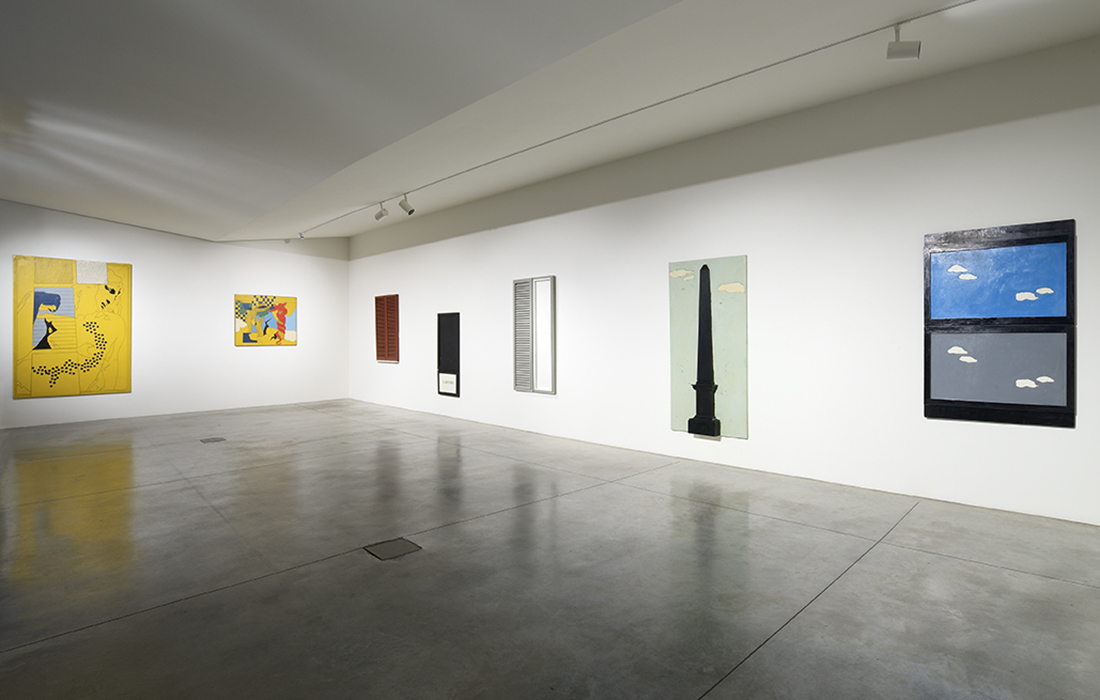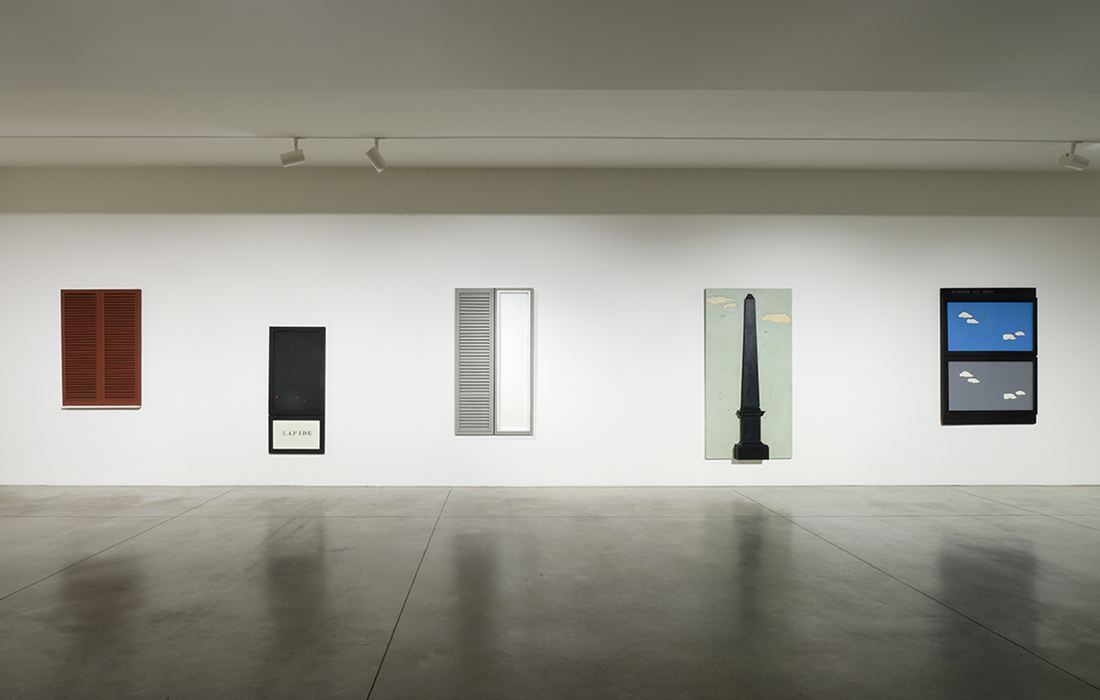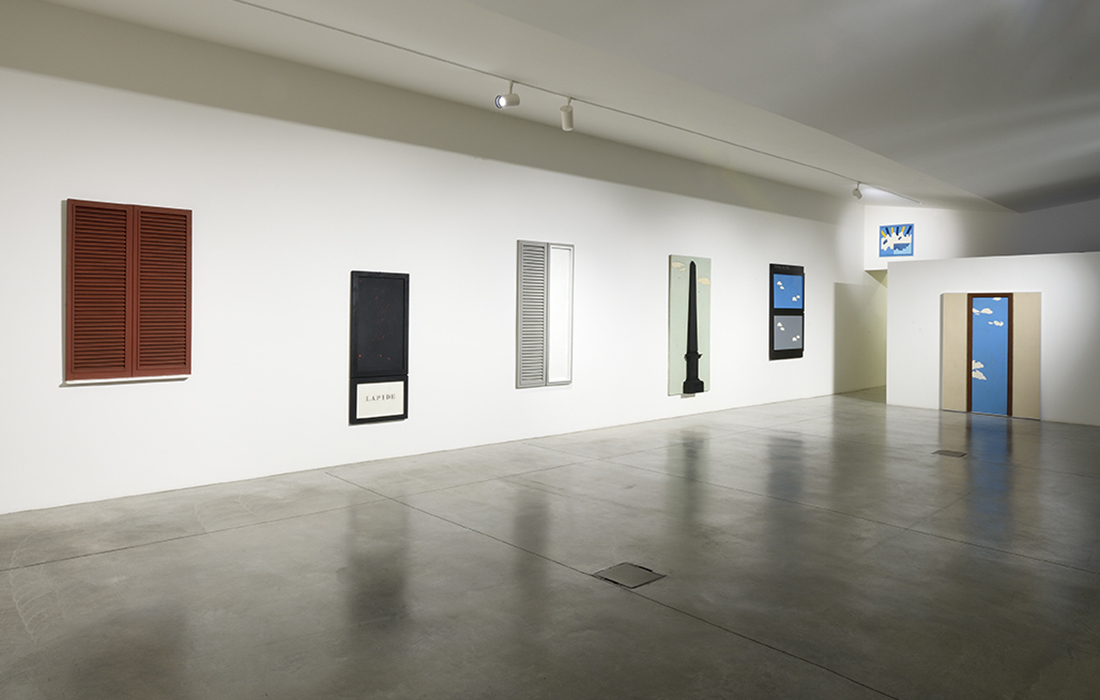March 2016
Studio Gariboldi presents a retrospective exhibition dedicated to Tano Festa (1938-1988), the master of the roman Pop Art and one of the leading artists of the School of Piazza del Popolo. The exhibition focuses on the selected works created between 1960 and 1966, which reflect the main themes of his artistic research: shutters, windows, obelisks, doors, headstones, skies and subjects taken from the masterpieces of Michelangelo.
Tano Festa attended the Art Institute of Rome and got his degree in Artistic Photography in 1957.
After numerous group shows with artists like Uncini, Angeli, Schifano and his brother Lo Savio, Festa, being only 23 years old, had his first solo show at the gallery La Salita of Rome, curated by Cesare Vivaldi.
His first artistic production concentrated on the geometric monochrome and the re-elaboration of the objects.
His shutters, doors, windows, wardrobes and mirrors weren’t objets trouves, but objects that were carefully reconstructed, veiled with color and therefore deprived of their most obvious sense – they lived in a new poetic art space, which was no longer the space of the daily life. Impassive and silent witnesses of everything that surrounded them, they became visual icons and “contemplation objects”. Paradoxically, Tano Festa was able to make his objects/artworks more real and present than ever.
In 1962 Festa was invited to participate in the exhibition “The New Realism” at the Sidney Janis Gallery of New York. The following year Francesco Lo Savio, the older brother of Tano, committed suicide in a hotel in Marseille – this tragic event changed Festa’s approach to art. The objects began to assume a metaphysical valence, going beyond the limits of the human existence. They were able to remain despite the time given to each mortal being and make us feel a sense of ambiguity and helplessness in front of their physical, inorganic, obtuse being, and even a sense of mystery and impenetrability of their cold and dark forms. (From the letter of Tano Festa to Arturo Schwarz, 1966)
In 1964 Tano Festa participated to the XXXII Biennale of Venice, displaying one of his Shutters and the artwork The creation of man. The latter one was the result of his research on the iconographic elements of the past. Particularly, Festa became increasingly interested in Michelangelo’s frescoes (The Sistine Chapel) and sculptures (The Medici Chapels). The artist treated the subjects taken from Michelangelo’s masterpieces with extreme freedom. In Festa’s works the elements of the past came to life in a new, slightly surreal, dimension. The history and the culture of a country produce images that are related to art. For the artist these are the images that we consume on daily basis. This iconography was completely different from the concept of American Pop Art and its consumerism.
Festa, a painter who defined himself “popular” rather then “pop”, reversed the american concept of the New York School:
(…) we live in a country where, instead of consuming canned foods, we consume the image of Mona Lisa on chocolates. (From the exhibition catalog of the gallery La Salita, 1967)
During his stay in New York, Festa worked on Skies series, which he finished in Italy and displayed in 1966 at Schwarz gallery. In these works the sky became the protagonist and a series of squares and frames created different dimensions, giving the illusion of more paintings and backgrounds on the same canvas – almost contructivistic compositions, which combined unconscious memories with present.






